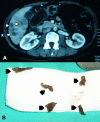Human Fascioliasis: Current Epidemiological Status and Strategies for Diagnosis, Treatment, and Control
- PMID: 33273878
- PMCID: PMC7705270
- DOI: 10.2147/RRTM.S237461
Human Fascioliasis: Current Epidemiological Status and Strategies for Diagnosis, Treatment, and Control
Abstract
Purpose of the review: This review aims to critically assess current knowledge about the epidemiology, diagnosis, and management of Fasciola infection in humans.
Recent findings: Fascioliasis is an emerging neglected zoonotic infection affecting the health and wellbeing of human populations. The burden of infection is unclear, and studies have shown the geographic expansion of fascioliasis in human and livestock likely related to climate change. The infection can be asymptomatic or present in acute or chronic forms. Regardless of the presentation, fascioliasis can be associated with long-term complications such as anemia and malnutrition. Early in the infection, antibody testing is the only tool available for diagnosis confirmation. In the chronic forms serology and stool microscopy are helpful. Other tests such as antigen detection and PCR-based methods including isothermal tests have shown promising results. Triclabendazole is the only drug available to treat Fasciola infection. However, reports of resistant infections in livestock and human threaten the clinical care and control of the infection in endemic areas.
Summary: Fascioliasis is an emerging infection around the world with an uncertain burden. Lack of standardization of diagnostic testing and treatment alternatives hinder treatment and control of the infection.
Keywords: Fasciola gigantica; Fasciola hepatica; diagnosis; epidemiology; treatment; triclabendazole.
© 2020 Caravedo and Cabada.
Conflict of interest statement
The authors report no conflicts of interest for this work.
Figures

References
-
- Rim H-J, Farag HF, Sornmani S, Cross JH. Food-borne trematodes: ignored or emerging? Parasitol Today. 1994;10(6):207–209. doi:10.1016/0169-4758(94)90111-2 - DOI
Publication types
LinkOut - more resources
Full Text Sources
Research Materials

